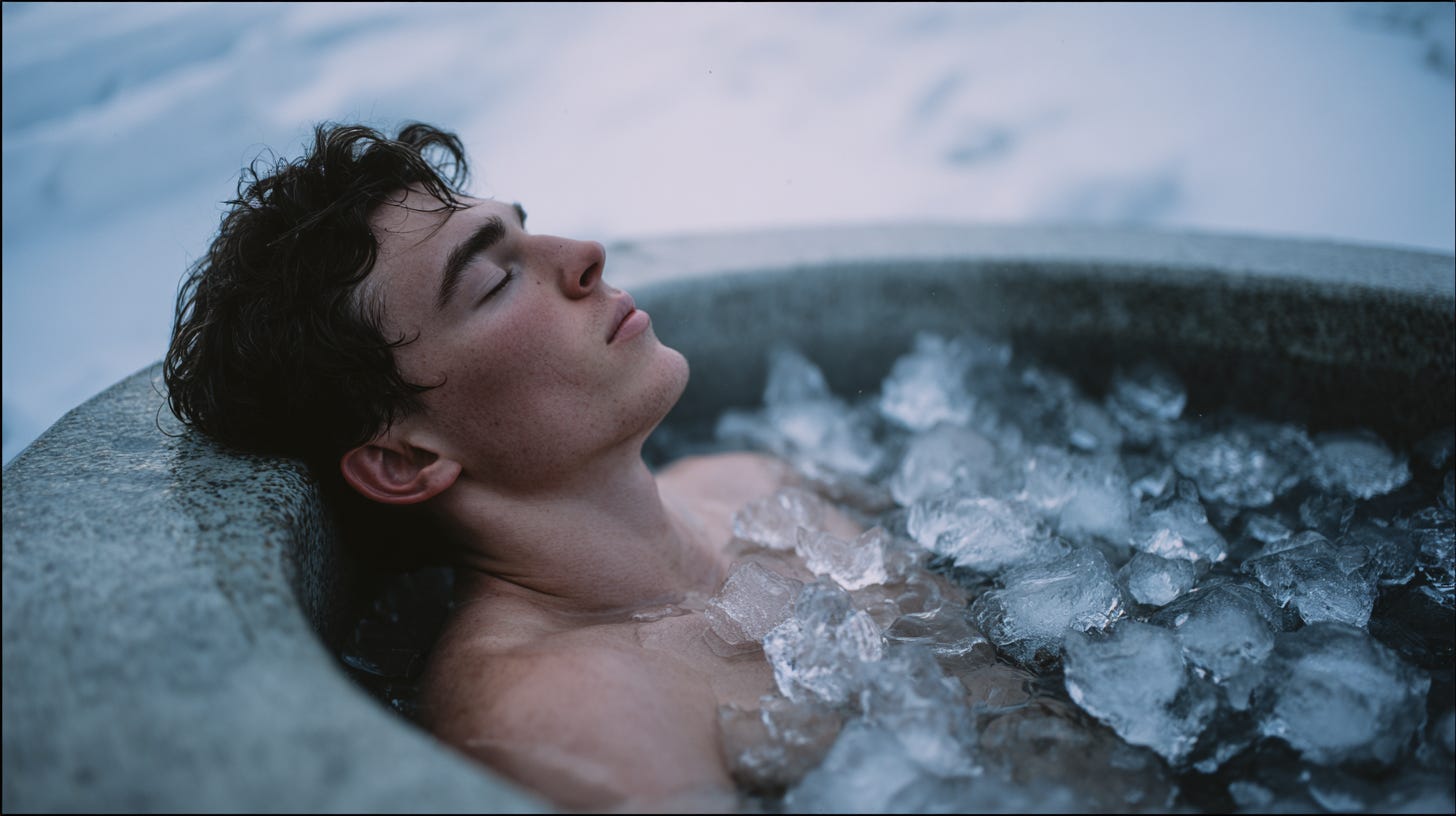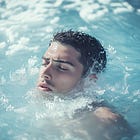Debunking Recovery Myths: Why Ice Baths and Hot Tubs Don’t Outperform Placebo for Soccer Players
A groundbreaking study reveals that popular recovery methods like cold- and hot-water immersion are no more effective than sham treatments for elite youth soccer players.
This study examines whether cold-water immersion (CWI) and hot-water immersion (HWI), popular recovery methods in soccer, effectively enhance recovery and training adaptations compared to a placebo in national-level youth soccer players.
PMID: 40498100
Key Points
Aim
The study aimed to compare the effects of CWI, HWI, and placebo on the recovery of physical performance after a simulated soccer match.
It also examined whether repeated use of these recovery methods over 15 weeks affects training adaptations.
Participants were 40 male adolescent soccer players (15–19 years), randomised into CWI (10 °C for 10 min), HWI (42 °C for 20 min), or placebo (sham laser treatment for 6 min).
Physical performance tests included a submaximal aerobic test, a 20 m sprint, a countermovement jump (CMJ), and knee extension strength tests.
Part I assessed recovery up to 45 hours post-match; Part II evaluated training adaptations after 15 weeks of regular use of the assigned recovery modality.
Methods
The simulated soccer match (SSM) was a 90-minute protocol that mimicked the demands of a competitive match.
Recovery modalities were applied immediately after the post-match test battery.
Performance tests were conducted before the SSM and at 0, 21, and 45 hours post-SSM.
For the 15-week intervention, participants used their assigned recovery method about twice weekly after training sessions.
Body composition and physical performance were assessed pre- and post-intervention.
Results
Acute Recovery (Part I): All groups showed similar declines in performance immediately after the SSM (e.g., sprint time, jump height, strength), with no significant differences between CWI, HWI, and placebo in recovery at 21 and 45 hours post-SSM.
Heart rate, perceived exertion, and blood lactate responses were also similar across groups.
Neither CWI nor HWI improved recovery of aerobic, sprint, jump, or strength performance beyond placebo.
Training Adaptations (Part II): Over 15 weeks, all groups showed expected increases in height, body mass, and fat-free mass, reflecting normal growth and training effects.
Improvements in sprint time, maximal strength (MVIC), and fatigue resistance (time to exhaustion) occurred similarly in all groups.
CMJ height slightly decreased in all groups, likely due to altered jump mechanics, but peak force improved.
No significant differences between groups were found in body composition or physical performance changes, indicating that repeated CWI or HWI did not enhance or impair training adaptations compared to placebo.
Related
Practical Takeaways
Post-exercise cold- or hot-water immersion does not provide superior recovery benefits compared to placebo in youth soccer players under cool ambient conditions.
Regular use of CWI or HWI does not significantly affect long-term training adaptations in strength, sprint, or aerobic performance.
The perceived benefits of these recovery methods may largely stem from placebo effects and athlete belief rather than physiological advantages.
Coaches and athletes should consider ambient conditions and personal comfort when selecting recovery modalities, as neither CWI nor HWI showed clear superiority.
Investing in recovery methods should be balanced with the understanding that a simple placebo or rest may be equally effective.
Summary
This well-controlled randomised study demonstrates that neither cold-water immersion nor hot-water immersion improves post-match recovery or long-term training adaptations beyond placebo in highly trained adolescent soccer players. The findings challenge the widespread use of these modalities solely for enhancing recovery or performance gains in similar populations, especially in non-hot environments. The study highlights the importance of placebo effects and suggests that recovery strategies should be chosen based on environmental context and athlete preference rather than assumed physiological benefits.
Athletes and coaches can optimise recovery protocols by focusing on evidence-informed, effective, and practical approaches rather than popular but unproven methods.
Reference
Gustafsson, J., Montiel-Rojas, D., Romare, M.G.A. et al. Cold- and hot-water immersion are not more effective than placebo for the recovery of physical performance and training adaptations in national level soccer players. Eur J Appl Physiol (2025). https://doi.org/10.1007/s00421-025-05835-w









